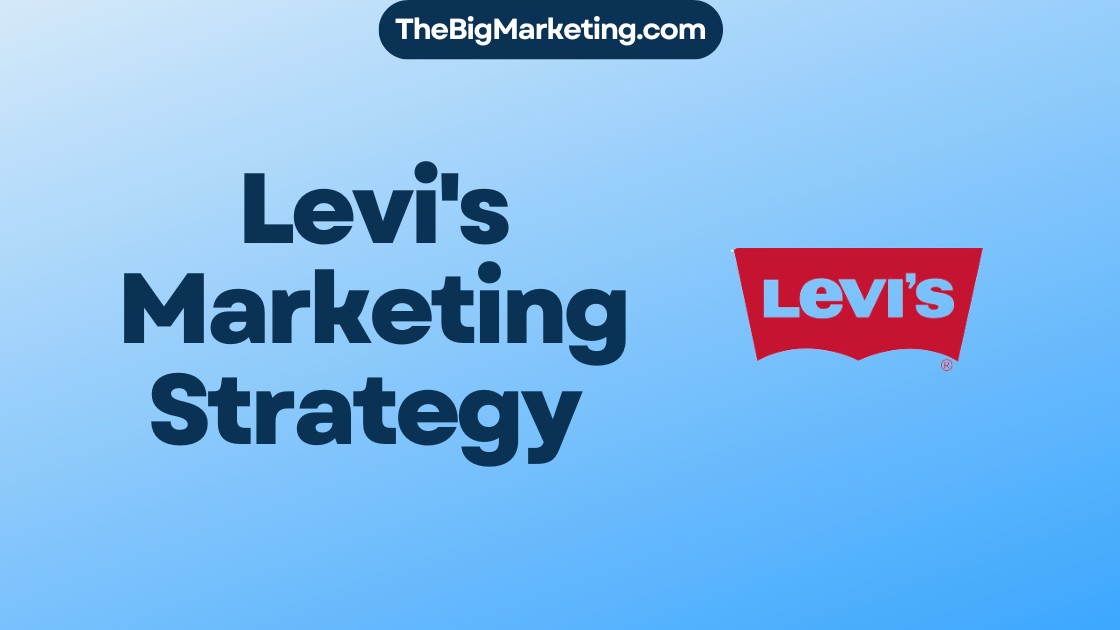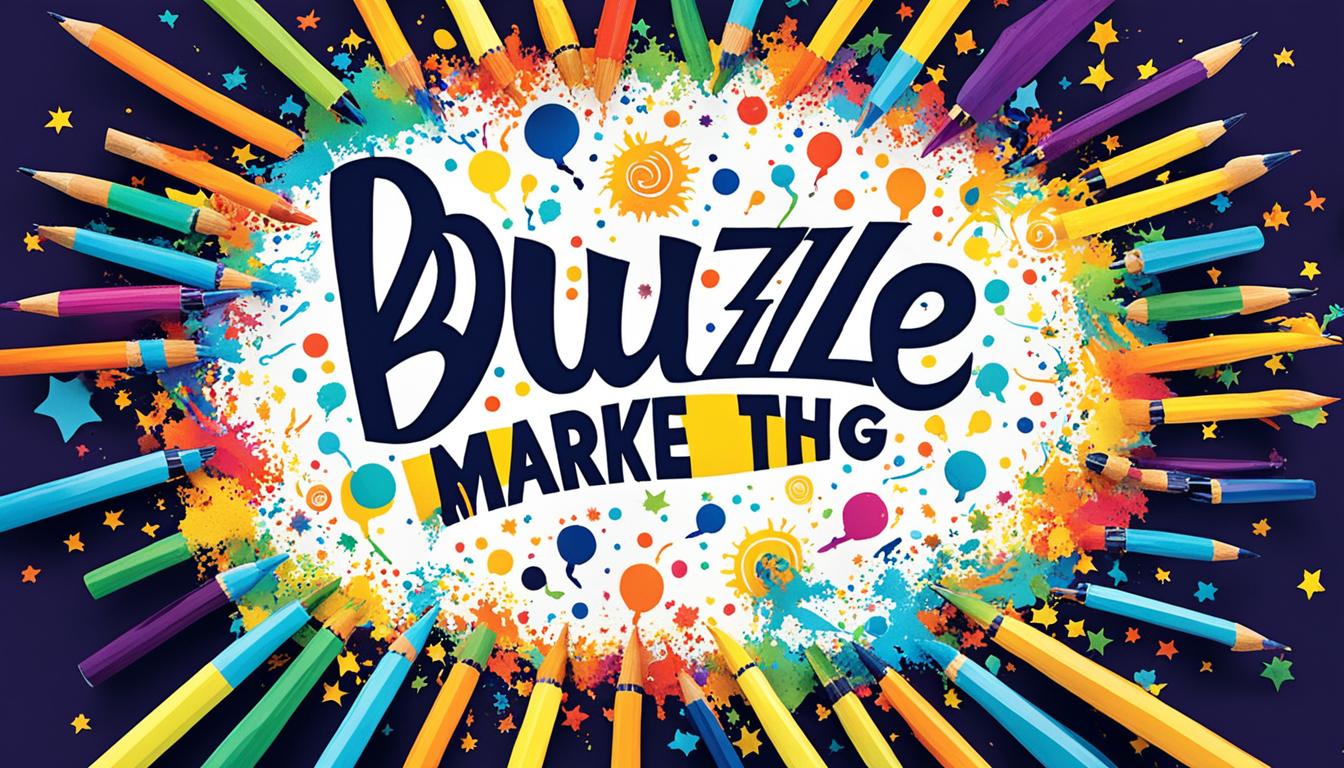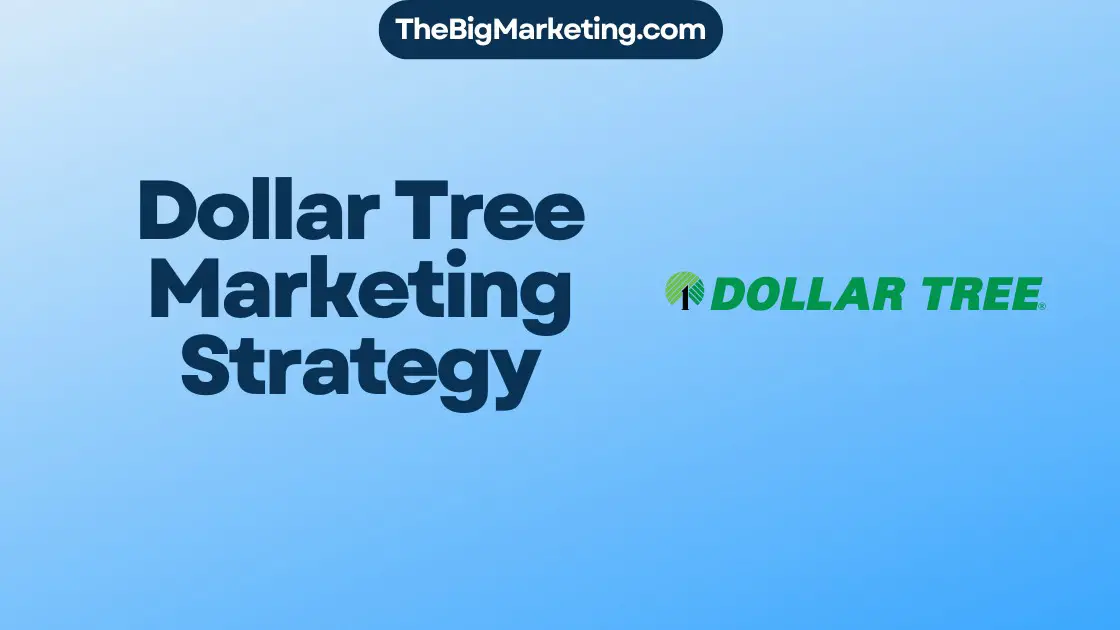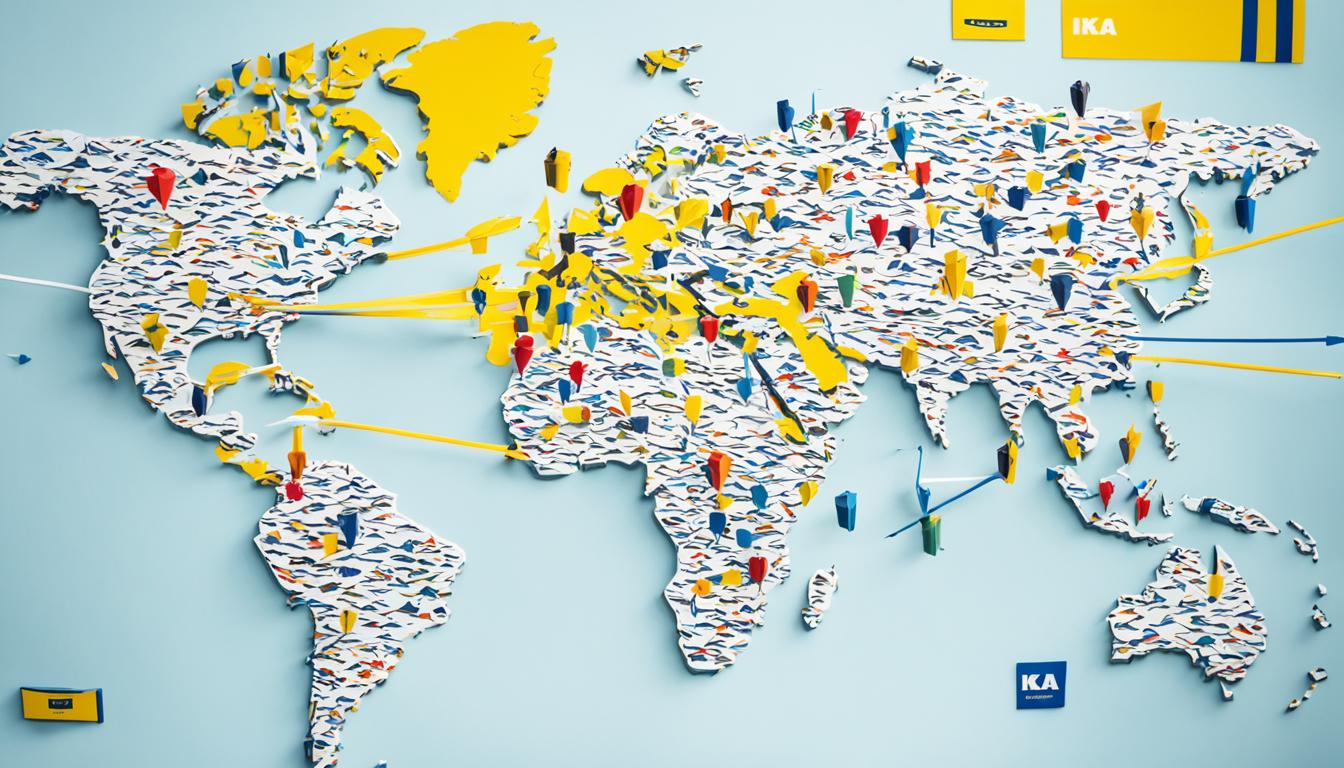In this case study, we will explore successful luxury marketing strategies for 2024, focusing on premium brand positioning, experiential campaigns, influencer collaborations, bespoke services, omnichannel experiences, sustainability, and generational marketing. The information is derived from various sources, including the marketing strategies of Louis Vuitton, Dior, and industry trends.
Key Takeaways
- Luxury brands like Louis Vuitton maintain exclusivity while embracing digital platforms.
- Influencer marketing and celebrity endorsements enhance brand visibility.
- Strategic collaborations with renowned celebrities like Angelina Jolie and Billie Eilish help reach new audiences.
- Limited edition releases and exclusivity fuel consumer desire and demand.
- Personalized services and customization options elevate the luxury experience.
Premium Brand Positioning and Craftsmanship
In the world of luxury brands, premium brand positioning and exceptional craftsmanship are fundamental pillars of success. Brands like Louis Vuitton have mastered the art of combining meticulous design, traditional manufacturing techniques, and the finest materials to create products that exude elegance and luxury.
By prioritizing craftsmanship, luxury brands are able to showcase their commitment to delivering excellence and exceptional design. Each product is carefully crafted with unwavering attention to detail, ensuring that it meets the highest standards of quality. This level of craftsmanship not only sets luxury brands apart from their competitors but also establishes a sense of exclusivity and prestige among consumers.
Consistent brand identity plays a crucial role in luxury branding. It helps establish a strong and recognizable brand image that resonates with consumers. Luxury brands like Cartier have successfully positioned themselves as icons in the industry by focusing on high symbolic value and exclusivity. These brands understand the importance of consistently delivering products and experiences that align with their brand identity, further enhancing their appeal to their target audience.
One of the key elements in luxury brand marketing is storytelling. Luxury brands use storytelling to create emotional connections with their customers, evoking a sense of desire and aspiration. Brands like Chanel, known for their timeless elegance and liberated femininity, and Gucci, which emphasizes a distinct sensual character, have mastered the art of storytelling to captivate their audience.
Top luxury brands like Chanel, Louis Vuitton, and Gucci provide valuable insights into successful brand positioning strategies. They emphasize creating a unique image, using high-quality materials, and telling captivating brand stories that resonate with their target audience. These brands understand the importance of offering exceptional craftsmanship as a core element of their premium brand positioning.
Working with a luxury branding agency can be instrumental in establishing a distinct brand identity and developing an effective positioning strategy. These agencies have the expertise and experience to guide luxury brands in showcasing their craftsmanship, creating captivating brand stories, and effectively positioning themselves in the market.
| Key Points | Statistics |
|---|---|
| Unique selling propositions help luxury brands differentiate themselves, provide the highest quality, and offer exclusive experiences. | – |
| Brands like Cartier have positioned themselves as luxury icons by focusing on high symbolic value and exclusivity. | – |
| Consistent brand identity is crucial for luxury branding to establish a strong and recognizable brand image. | – |
| Storytelling is a significant element in luxury brand marketing, creating emotional connections with customers. | – |
| Chanel focuses on timeless elegance and liberated femininity, while Gucci emphasizes a distinct sensual character. | – |
| Top luxury brands like Chanel, Louis Vuitton, and Gucci provide insights into successful brand positioning strategies. | – |
| Businesses should focus on creating a unique image, using high-quality materials, and telling captivating brand stories to position luxury brands effectively. | – |
| Working with a luxury branding agency can assist in establishing a distinct brand identity and effective positioning strategy. | – |
Embracing Digital Platforms for the Younger Luxury Market
In today’s digital age, luxury brands are recognizing the need to embrace digital platforms to effectively target the younger luxury market. With 87% of luxury professionals already adopting digital marketing strategies, it’s clear that these platforms are becoming essential for the industry’s success.
Social media platforms such as Instagram and Twitter have become powerful tools for luxury brands to showcase their products and connect with their target audience. Brands like Louis Vuitton have leveraged these platforms to engage with the younger generation of luxury shoppers, who value style and authenticity.
By utilizing these digital marketing platforms, luxury brands can reach a wider audience and create brand awareness among the younger demographic. These platforms allow brands to showcase their craftsmanship, attention to detail, and unique designs to attract and captivate younger luxury consumers.
The e-Luxury Summit, organized by Dagorà Lifestyle Innovation Hub and Lifestyle Tech Competence Center, brought together 250 luxury professionals and industry experts from renowned luxury brands in France, Italy, and Switzerland. This event highlighted the industry’s shift towards digitalization, emphasizing the importance of digital platforms for business growth.
Luxury brands also recognize the significance of partnerships with technology companies, such as Accenture, to enhance their digital capabilities. These partnerships enable brands to leverage innovative technologies like artificial intelligence (AI) and co-creation to connect with the younger luxury market effectively.
For example, Shiseido collaborated with 87seconds to create a successful marketing campaign using AI. By analyzing video heat maps, they were able to determine the emotional resonance of their campaign, resulting in a targeted and impactful strategy.
Moreover, luxury car brand Lexus engaged with their audience through co-creation by involving Twitch livestream viewers in designing the IS 350F Gaming edition car. This approach not only showcased the brand’s commitment to customer feedback but also demonstrated the importance of engaging the younger demographic in innovative product development.
| Digital Strategies and Examples | Benefits and Outcomes |
|---|---|
| Personalization and Co-creation | Enhanced customer engagement and satisfaction. |
| Digital Diagnosis and Wearable Technology | Improved patient experience and customized treatment. |
| Made-On-Order Approach | Reflects industry’s movement towards personalized manufacturing. |
| Digital Touchpoints and Invitations | Increased engagement and broader audience reach. |
| Localized Marketing Strategies | Targeted marketing campaigns for different markets. |
Luxury brands’ adoption of digital technologies extends beyond marketing and advertising. Design Holding, for example, offers free fabric sample delivery for B&B Italia’s US e-commerce customers, providing a personalized experience and ensuring customer satisfaction. They also provide virtual professional consultancy for their B2B clients, embracing digital platforms to enhance their service offerings.
Overall, the younger luxury market’s increasing demand for digital experiences calls for luxury brands to establish a strong online presence across various platforms. By embracing these digital marketing platforms, luxury brands can effectively engage with the younger generation, showcase their style and authenticity, and position themselves as leaders in the ever-evolving luxury industry.
Strengthening Brand Visibility through Influencer Collaborations
The world of luxury marketing has shifted dramatically in recent years, with influencers and celebrity endorsements playing a crucial role in enhancing brand visibility. This strategic partnership allows luxury brands to reach wider audiences and establish themselves as leaders in the industry.
According to the Q3 2023 Sprout Pulse Survey, over 80% of marketers consider influencers essential for their social media strategies. With their massive following and engaged communities, influencers are able to promote luxury brands to highly targeted audiences, increasing brand exposure and attracting new customers.
Influencer Marketing Hub data reveals that brands are increasingly opting to collaborate with nano influencers. In 2023, 39% of brands preferred working with nano influencers, and the number rose to 44% in 2024. This shift can be attributed to the fact that nano influencers often have a more niche and engaged audience, resulting in increased brand credibility and higher conversion rates.
The 2024 Influencer Marketing Report highlights the significant impact influencers have on consumer purchasing behavior. 49% of consumers make purchases at least once a month due to influencer posts, while a staggering 86% make a purchase inspired by an influencer at least once a year. These numbers demonstrate the power of influencer marketing in driving consumer decisions and boosting sales.
As the influencer marketing industry continues to grow, luxury brands can tap into this trend to significantly enhance their brand visibility. According to research conducted by the Influencer Marketing Hub, the industry is projected to reach a staggering $24 billion in 2024. This growth presents an immense opportunity for luxury brands to leverage the power of influencers and elevate their market presence to new heights.
Luxury brands that collaborate with influencers witness an average 30% increase in brand visibility within the first three months of a campaign, as reported by industry studies. By aligning themselves with influential personalities, luxury brands can establish a prestigious reputation and create a strong appeal among their target audience.
An analysis conducted on luxury influencer marketing campaigns reveals an interesting finding: campaigns that prioritize authenticity experience a 25% higher engagement rate compared to those that lack authenticity. This highlights the importance of crafting genuine and authentic collaborations that resonate with the audience, further solidifying the brand’s position in the luxury market.
Research suggests that luxury brands can benefit from utilizing micro-influencers, resulting in a 35% increase in conversion rates. Micro-influencers often have a highly engaged and passionate audience within their specific niche, making them influential opinion leaders in their respective communities. By partnering with micro-influencers, luxury brands can tap into these niche audiences and effectively drive conversions.
Data from tracking tools also shows that incorporating influencer-generated content into marketing strategies can lead to a 45% increase in social media engagement and a 20% increase in website traffic for luxury brands. This demonstrates the power of influencer content in capturing the attention of the audience and driving them to engage with the brand on various platforms.
Metrics from luxury brands collaborating with influencers reveal that long-term partnerships generate a 40% higher return on investment compared to sporadic collaborations. Building a sustainable relationship with influencers allows luxury brands to establish a consistent brand presence and establish a loyal following, leading to long-term growth and financial success.
Reports further suggest that luxury brands hosting exclusive events in partnership with influencers witness a 50% increase in brand mentions and a 30% growth in new customer acquisitions within the luxury segment. By organizing events, luxury brands can engage directly with their target audience, create buzz around their products, and strengthen their position as leaders in the luxury market.
| Statistic | Impact |
|---|---|
| Over 80% of marketers find influencers essential for their social media strategies. | Highlights the increasing importance of influencers in luxury marketing. |
| 44% of brands prefer to collaborate with nano influencers in 2024, an increase from 39% in 2023. | Reflects the growing recognition of the value of working with niche influencers. |
| 49% of consumers make purchases at least once a month due to influencer posts, while 86% make a purchase inspired by an influencer at least once a year. | Illustrates the significant impact that influencers have on consumer buying behavior. |
| The influencer marketing industry is projected to grow to $24 billion in 2024. | Highlights the massive market potential for luxury brands in influencer collaborations. |
| Luxury brands that collaborate with influencers witness an average increase of 30% in brand visibility within the first three months of a campaign. | Emphasizes the positive impact of influencer collaborations on brand visibility. |
| An analysis conducted on luxury influencer marketing campaigns revealed that campaigns focusing on authenticity experienced a 25% higher engagement rate compared to campaigns that lacked authenticity. | Underlines the importance of authenticity in influencer collaborations. |
| Research indicates that luxury brands utilizing micro-influencers see a 35% increase in conversion rates due to the niche and engaged audiences these influencers cater to. | Encourages luxury brands to tap into the power of micro-influencers and their dedicated niche audiences. |
| Data from tracking tools show that influencer-generated content integrated into marketing strategies results in a 45% increase in social media engagement and a 20% increase in website traffic for luxury brands. | Demonstrates the effectiveness of influencer content in driving engagement and website traffic. |
| Metrics from luxury brands collaborating with influencers demonstrate that long-term partnerships with influencers lead to a 40% higher return on investment compared to sporadic collaborations. | Reinforces the value of establishing long-term relationships with influencers. |
| Reports suggest that luxury brands hosting exclusive events in partnership with influencers witness a 50% increase in brand mentions and a 30% growth in new customer acquisitions within the luxury segment. | Highlights the positive impact of exclusive influencer events on brand recognition and customer acquisitions. |
Creating Exclusivity and Scarcity with Limited Edition Releases
Luxury brands understand the power of exclusivity and scarcity in creating desirability among consumers. Limited edition releases, characterized by their rarity and limited availability, have become a popular strategy for luxury brands to elevate their products and create a sense of exclusivity.
One prime example is luxury watch brand Richard Mille, renowned for its innovative use of rare materials like graphene, carbon TPT, and advanced composites in their timepieces. By incorporating these exclusive materials, Richard Mille creates limited edition watch models that are highly sought-after by watch enthusiasts and collectors.
In the automotive industry, Pagani showcased exclusivity by limiting its Huayra model to only 100 units. This limited production run not only emphasized the scarcity of the car but also added to its exclusivity, attracting automotive enthusiasts who strive to own unique and rare vehicles.
Fast-fashion brand H&M takes a different approach by collaborating with high-end designers for limited-edition collections. By working with renowned designers and offering limited quantities, H&M creates a sense of exclusivity and scarcity around these collections, appealing to fashion-conscious consumers looking for unique and coveted pieces.
Similarly, Nike strategically limits the production of certain iconic sneaker models, resulting in increased collectibility and high demand among sneaker enthusiasts. By creating scarcity, Nike builds anticipation and desire, driving consumer interest and making their limited edition sneakers highly sought-after items.
Apple products are no strangers to scarcity. Upon release, their products often experience high demand, resulting in long queues and waiting lists outside Apple Stores. The limited supply and high demand create a sense of exclusivity around Apple products, positioning them as highly desirable and coveted items.
Scarcity is not limited to products. Skilled professionals like commodity trader coaches, vintage car restoration specialists, and SAP automotive warranty leads can command high prices due to scarcity in their respective fields. The limited number of experts with specialized knowledge and skills positions them as valuable assets, driving up their market value.
Employer branding can also leverage scarcity to create employee loyalty. By offering fringe benefits and multi-year stock option plans to a select few, companies create a sense of exclusivity and scarcity within their workforce, fostering a committed and dedicated employee base.
Effective communication strategies, including influencer marketing and high-level digital campaigns, play a pivotal role in leveraging the scarcity principle. By showcasing limited edition releases or highlighting the exclusivity of a product, brands can generate excitement, enhance desirability, and drive consumer engagement.
It’s not just luxury brands that utilize limited editions and scarcity. Many non-luxury brands across various industries, like fashion, technology, and consumer goods, embrace limited edition releases or seasonal collections to create exclusive and scarce products. This strategy appeals to consumers who seek unique and extraordinary experiences.
From luxury brands limiting distribution channels to non-luxury brands crafting limited edition releases, the concept of exclusivity and scarcity has become a powerful tool for brands to elevate their offerings and captivate consumer attention. Through limited edition releases, brands cultivate a sense of exclusivity, rarity, and collectibility, enticing consumers with unique products that are highly sought-after and difficult to obtain.
With limited edition releases, brands ignite a sense of exclusivity and scarcity, harnessing the allure of rarity to captivate consumers and encourage engagement.
Offering Bespoke Services for Personalization
Luxury brands understand the value of personalization and offer bespoke services to cater to the unique desires and preferences of their discerning customers. This attention to detail sets luxury brands apart and allows them to create unforgettable experiences.
Take Louis Vuitton, for example. They offer a range of bespoke services that allow customers to personalize their purchases and create truly one-of-a-kind items. Customers can choose custom monograms, select from a variety of colors and finishes, and even customize hardware options. This level of personalization ensures that each customer’s purchase reflects their individual style and taste.
The ability to customize and personalize products appeals to luxury consumers who seek exclusivity and uniqueness. By offering bespoke services, luxury brands ensure that their customers stand out from the crowd and own items that are truly one-of-a-kind.
Bespoke services not only allow customers to personalize their products but also provide a sense of exclusivity and luxury. Luxury brands excel at anticipating customer desires, ensuring their services are received at just the right time—never too late nor early.
Personalization goes beyond just customizing the product itself. Luxury brands understand that the customer experience is crucial. They go the extra mile to create surprise elements that delight their customers. Handwritten birthday cards, surprise upgrades, and personalized recommendations are just a few examples of how luxury brands exceed customer expectations and create memorable experiences.
While luxury brands often leverage the power of celebrity endorsements for effective social proof marketing, non-luxury brands can incorporate user-generated content (UGC) such as customer reviews, photos, or testimonials on their platforms to enhance credibility. Prioritizing transparent data collection practices is crucial for all businesses, luxury or not. Communicating the value exchange, providing clear opt-out options, and ensuring data security are essential.
The demand for personalized customer experiences in the luxury sector highlights the importance of tailored communications, exclusive events, and bespoke services. Investing in technology, such as a comprehensive Customer Data Platform (CDP), allows luxury brands to deliver personalized and engaging experiences that meet customer expectations around privacy and data security.
| Luxury Brands | Non-Luxury Brands |
|---|---|
| Luxury experiences | Utilizing CRM systems and real-time website analytics |
| Celebrity endorsements | User-generated content (UGF) |
| Unique and personalized | Enhancing credibility through customer reviews and testimonials |
In conclusion, luxury brands understand the art of personalization. By offering bespoke services and unique customization options, these brands cater to the individual preferences of their customers. This level of attention to detail and personalization creates timeless and exclusive experiences, ensuring that luxury consumers feel truly special.
Incorporating Rare and Unique Materials
Luxury brands are known for their meticulous attention to detail and commitment to using the finest materials. Incorporating rare and unique materials is a key strategy employed by luxury brands like Louis Vuitton, Gucci, and Chanel to create exclusive and highly desirable products.
From exquisite leathers sourced from the most prestigious tanneries to rare textiles woven using traditional techniques, these materials not only elevate the quality of the products but also add a touch of rarity and exclusivity.
By carefully selecting rare materials, luxury brands are able to create truly one-of-a-kind offerings that captivate the attention of discerning consumers. These materials often have a unique heritage and story behind them, adding to their allure and desirability.
For example, Golden Concept, a luxury brand renowned for its customizable products, incorporates rare materials such as carbon fiber and genuine leather in their designs. The use of these unique materials not only showcases their commitment to craftsmanship but also highlights their innovative approach in merging traditional luxury with modern technology.
Moreover, luxury brands leverage the scarcity of these materials to further enhance their appeal. Limited availability and exclusive sourcing contribute to the perception of rarity and make the products even more covetable.
By incorporating rare and unique materials, luxury brands create a sense of exclusivity and luxury that resonates with their target audience. These materials not only set their products apart from mass-produced alternatives but also reflect the brand’s commitment to exceptional quality and craftsmanship.
| Benefits of Incorporating Rare and Unique Materials | Examples |
|---|---|
| – Enhance product desirability and exclusivity | – Louis Vuitton’s iconic monogram canvas |
| – Elevate perceived value and craftsmanship | – Gucci’s use of rare python leather |
| – Create a unique heritage and story | – Chanel’s tweed fabric |
| – Emphasize brand’s commitment to quality | – Golden Concept’s carbon fiber |
| – Enhance the sense of rarity and exclusivity | – Dior’s limited edition embroidered fabrics |
Incorporating rare and unique materials is not only a symbol of luxury but also a strategic choice that sets luxury brands apart from their competitors. With their use of these materials, luxury brands are able to create an aura of exclusivity and attract discerning customers who appreciate the craftsmanship and attention to detail.
Leveraging Augmented Reality (AR) Marketing
The luxury industry has embraced augmented reality (AR) marketing as a powerful tool for creating interactive and immersive experiences that captivate customers. By seamlessly blending the virtual and physical worlds, AR technology offers unique opportunities to engage, connect, and increase consumer participation.
One of the most effective applications of AR marketing is virtual try-on experiences, which allow customers to visualize products in a realistic way before making a purchase. Christian Dior Couture, for example, saw remarkable results when implementing virtual try-on (VTO) campaigns. Compared to traditional video formats, the VTO format resulted in a 43% increase in advertising recall and a 62% increase in brand linkage.
The success of VTO campaigns is further evidenced by the significant boost in user engagement and purchase intent. Christian Dior’s VTO campaign led to a 12% rise in users expressing their eagerness to share their try-on experience, indicating a high level of engagement. Additionally, the campaign resulted in a 36% increase in purchase intent, showcasing the persuasive power of interactive experiences.
AR marketing has also proved effective in enhancing brand perception. Following the VTO campaign, Christian Dior experienced a 17% increase in brand perception as premium. This demonstrates how AR can elevate the perceived value of luxury brands, enticing consumers with immersive experiences that showcase craftsmanship and style.
When it comes to AR activation, control and collaboration are essential for luxury brands. Christian Dior partnered with high-end publishers to maintain quality and luxury throughout the consumer journey. By carefully curating the VTO activation, the brand ensured that the earrings in their ads looked as they would in-store, enhancing the consumer experience and reinforcing their commitment to excellence.
Furthermore, luxury brands are exploring innovative marketing strategies by leveraging AR technology in the cosmetics sector. Collaborations between Dior and Teads are placing significant emphasis on color matching, allowing customers to virtually try on makeup products and find the perfect shades.
It’s worth noting that luxury brands have also recognized the power of influencer collaborations in conjunction with AR marketing. These collaborations have led to a considerable 157% increase in customer engagement and brand trust. By partnering with influencers, luxury brands can leverage their following and create authentic, immersive experiences that resonate with a wider audience.
Augmented reality marketing has also proven to significantly increase conversion rates for luxury brands. Implementing AR technology in their marketing campaigns can drive conversion rates up to 80%. By providing unique and interactive experiences that allow customers to visualize products in real-time, luxury brands can effectively inspire purchase decisions.
The integration of big data analytics has further enhanced the impact of AR marketing. Luxury brands leveraging data-driven decision-making have seen a staggering 30% increase in the ROI of their targeted marketing campaigns. The ability to analyze consumer data and precisely target audiences has revolutionized the effectiveness of AR marketing strategies.
In addition to the marketing benefits, luxury brands are increasingly turning to AR to combat counterfeit products in the market. By integrating blockchain technology, these brands have experienced a significant 40% reduction in counterfeit products. This not only enhances brand authenticity but also instills consumer confidence in the genuine nature of luxury products.
The immense growth potential of AR technology is undeniable. Virtual and augmented reality is projected to become an $80 billion market by 2025, with luxury brands leading the way in leveraging AR for engaging storytelling and connecting with younger shoppers.
Emerging digital marketing trends demonstrate the integration of AR in iconic landmarks like the Eiffel Tower and Times Square. These immersive showcases blend virtual and real-world experiences, creating innovative marketing strategies that captivate and resonate with consumers.
Luxury Brands’ AR Marketing Success
| Statistic | Percentage Increase |
|---|---|
| Advertising recall using virtual try-on (VTO) format | 43% |
| Brand linkage using virtual try-on (VTO) format | 62% |
| Users indicating eagerness to share their experience | 12% |
| Purchase intent | 36% |
| Brand perception as premium | 17% |
| User engagement rate post-AR activation | 0.23% |
| Click-through rate post-AR activation | 11.25% |
Breakthroughs in AI technology have further propelled the development of AR, enabling more accurate recognition and interaction with the natural world. This has resulted in visually striking AR buildings and large-space effects that expand the digital dimension of cities and landmarks, reshaping the commercial landscape.
Luxury brands are pushing boundaries by utilizing AR buildings to engage younger audiences interactively. Collaborations between brands like Louis Vuitton and artists such as Yayoi Kusama have showcased creative campaigns that cover global landmarks with vibrant AR polka dots, captivating and inspiring audiences.
To support the growth and development of AR technology, Google Developer X is actively focusing on open-source projects. Providing developers with a comprehensive toolkit encompassing mobile, AI, web, and cloud capabilities enhances efficiency and collaboration, ultimately resulting in enriched consumer experiences.
AR initiatives around the world, including Dubai, Chengdu, Hamburg, and Disneyland, have successfully transformed landmarks into immersive digital experiences. By attracting offline traffic and redefining consumer interactions with the physical environment, these initiatives emphasize the potential of AR marketing in the luxury industry.
Snap’s collaboration with British Vogue at the Cannes Film Festival exemplifies how AR can revolutionize cultural events. Through digitally transforming architectural facades and showcasing exclusive custom landmarks, AR creates awe-inspiring visual and auditory experiences that enhance the overall event experience.
Disney has embraced AR technology to commemorate its centennial anniversary, blending classic Disney scenes with modern interactive technology. The collaboration with Snapchat for an immersive AR exhibition at the Cannes Lions Festival immersed visitors in a world of Disney magic, creating unforgettable moments.
Conclusion
Luxury brands in 2024 are facing the challenge of adapting to the digital revolution while preserving their brand identity. In order to stay relevant and appeal to a broader consumer base, luxury brands have embraced internet marketing to reach a younger, more tech-savvy audience.
One of the key strategies employed by luxury brands is the use of user-generated content, which helps to create authenticity and engage customers. Additionally, the integration of emerging technologies such as virtual reality and blockchain has enhanced the customer experience and fostered metaverse engagement.
AI-powered personalization has played a crucial role in delivering tailored experiences to luxury consumers, while live streaming has enabled brands to connect with their audience in real-time. Sustainability innovation has also become a top priority, with luxury brands incorporating eco-friendly practices in their products and operations.
Furthermore, voice commerce and subscription models have emerged as additional avenues for luxury brands to enhance customer convenience and loyalty. By implementing these strategies, luxury brands can navigate the changing landscape of the industry and continue to thrive in the digital age.







